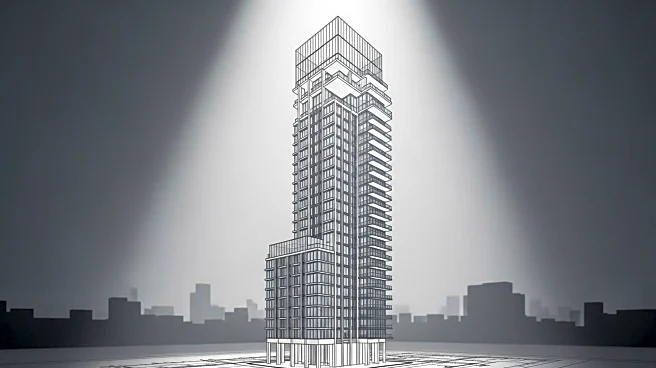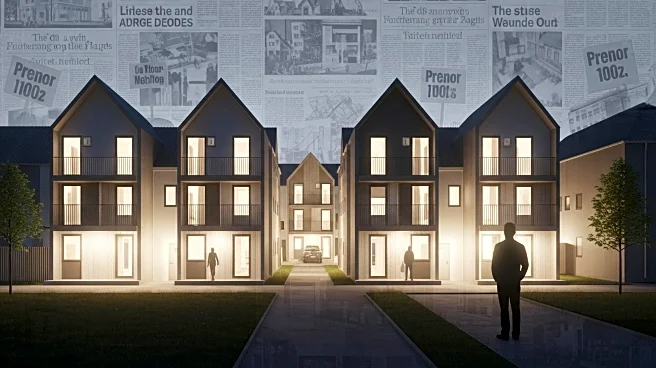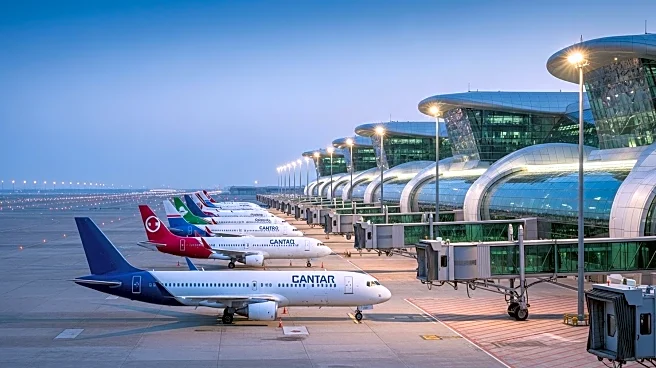What is the story about?
What's Happening?
A report by research firm Molior has revealed that housebuilding in half of London is currently unviable due to high development costs and regulatory delays. The report highlights that only a fraction of schemes with existing planning permission are likely to be built, as sales values no longer support development in many areas of the capital. The Building Safety Regulator (BSR) is cited as a significant factor, with delays in developments above 18 meters affecting 90% of unbuilt permissions. The report also notes a steep decline in private housing starts, with London on track for fewer than 5,000 private starts for the full year.
Why It's Important?
The viability crisis in London's housebuilding sector could have far-reaching implications for the city's housing market and economy. With fewer homes being built, there is likely to be increased pressure on housing supply, potentially driving up prices and exacerbating affordability issues. The delays caused by regulatory scrutiny could deter investment and slow down economic growth in the construction sector. This situation underscores the need for policy interventions to address development costs and streamline regulatory processes to ensure the delivery of new housing projects.
What's Next?
The report suggests that government action is needed to cut development costs and reform stamp duty to boost demand. Without such measures, the number of homes under construction in London could fall sharply in the coming years. Developers may continue to rent unsold units, reducing price pressure but slowing the sales market further. The Building Safety Regulator has pledged to reduce the backlog of schemes in the approval system, which could help alleviate some of the delays. Stakeholders will be watching closely to see if these efforts lead to tangible improvements in the viability of housebuilding projects.
Beyond the Headlines
The challenges facing London's housebuilding sector highlight broader issues related to urban development and housing policy. The high costs and regulatory hurdles reflect the complexities of building in densely populated areas, where land is scarce and safety standards are stringent. This situation may prompt discussions about innovative approaches to urban planning and the need for more flexible regulatory frameworks. Additionally, the focus on high-rise buildings raises questions about the future of urban living and the balance between density and livability.
AI Generated Content
Do you find this article useful?













